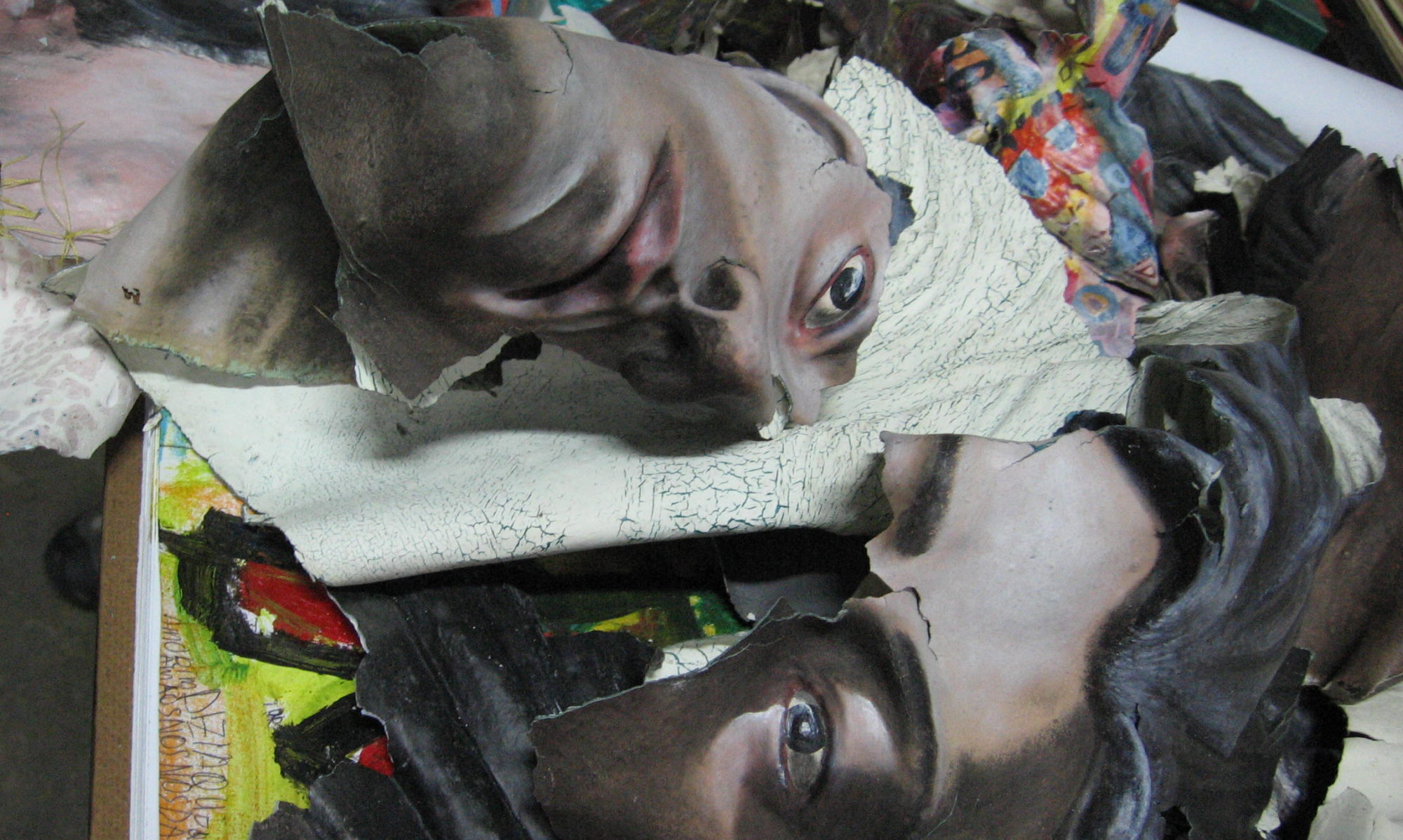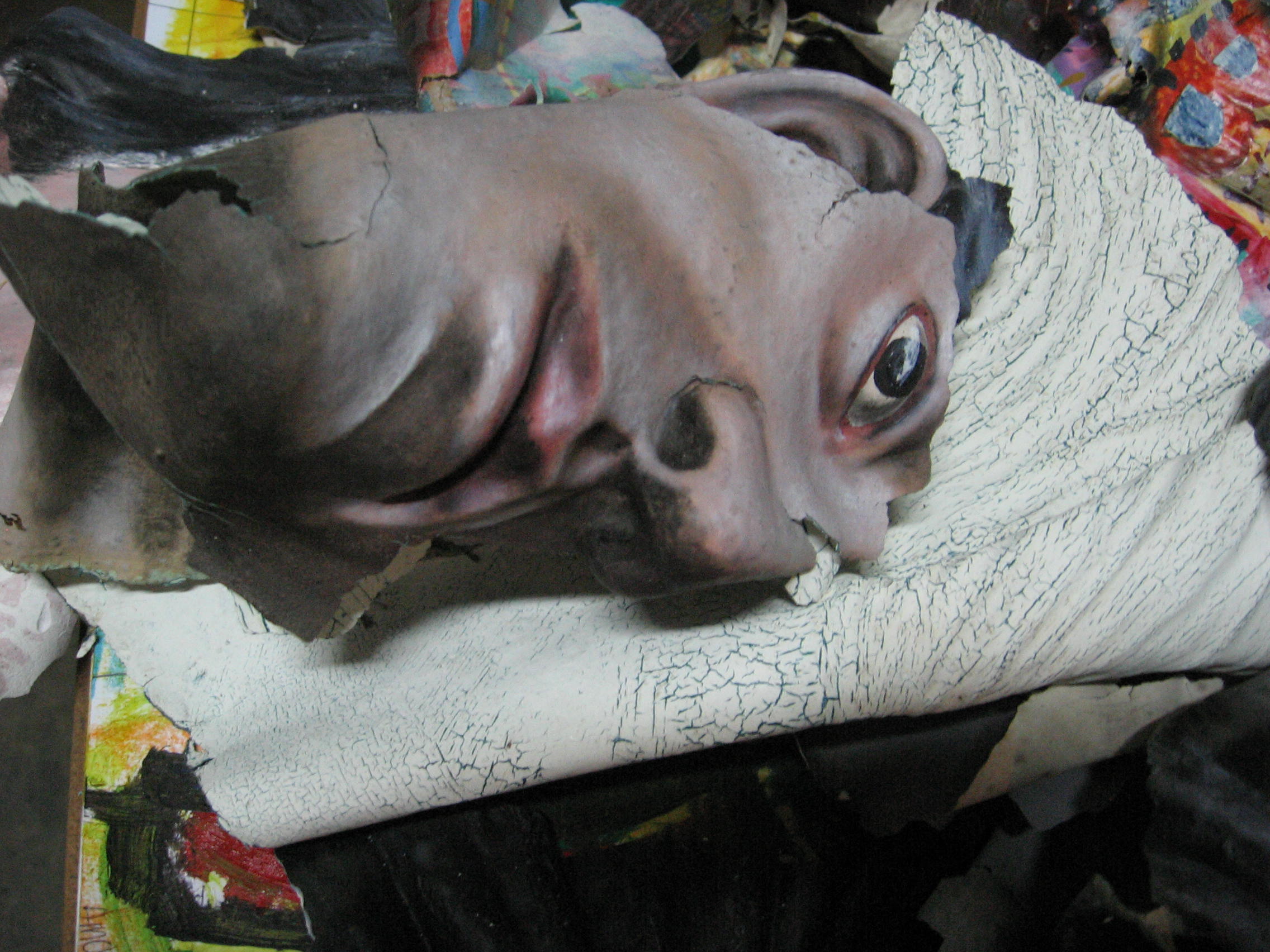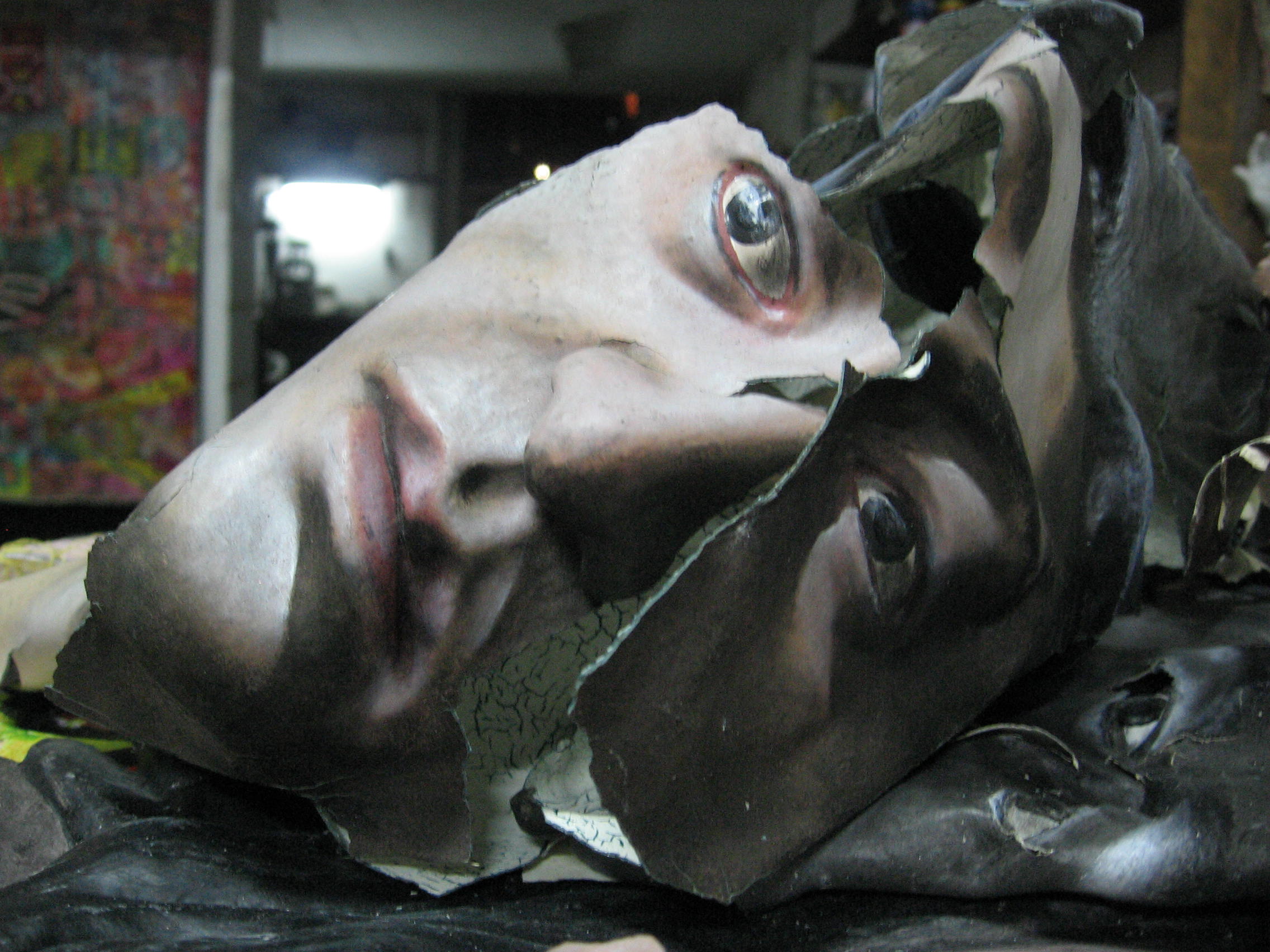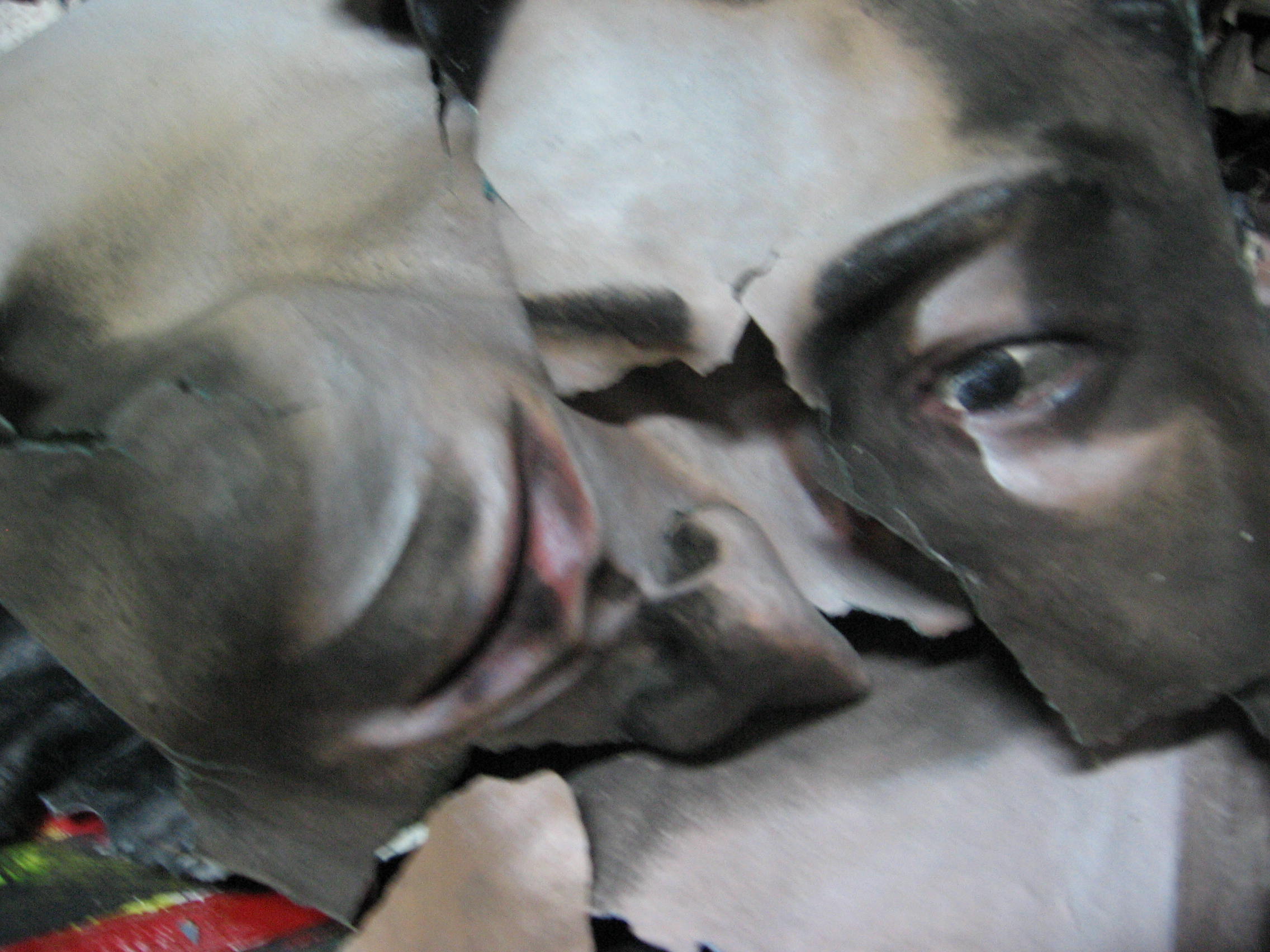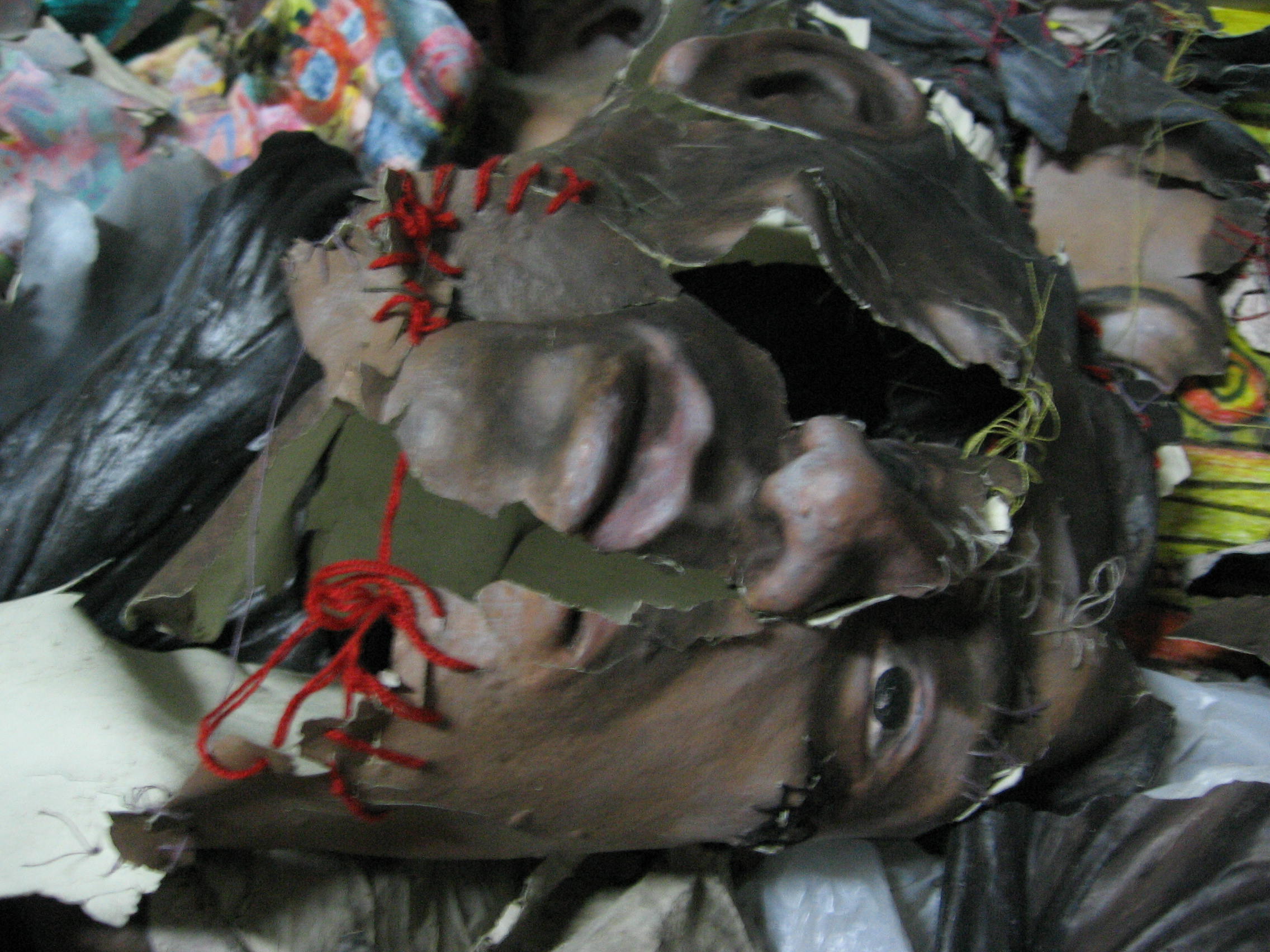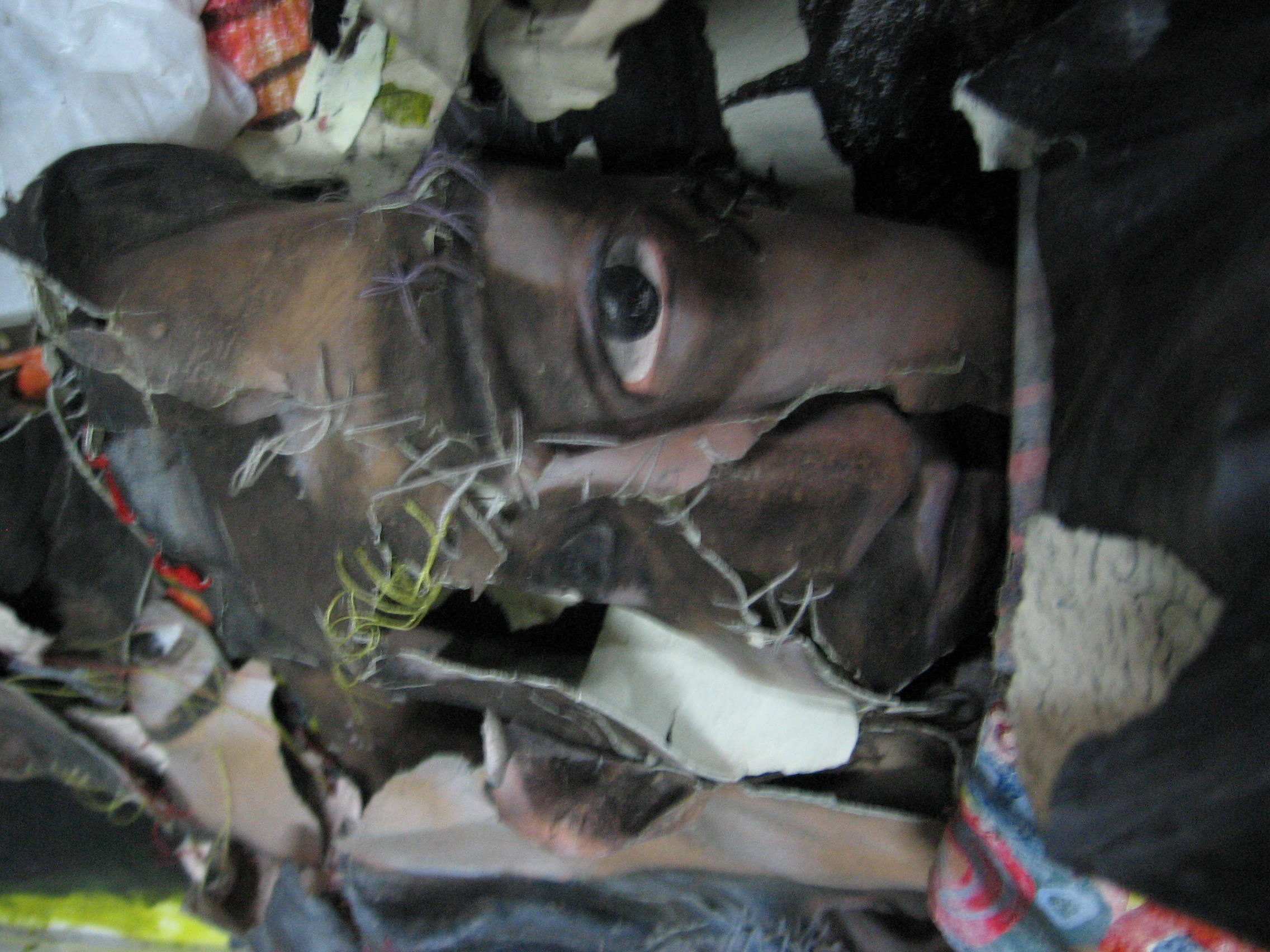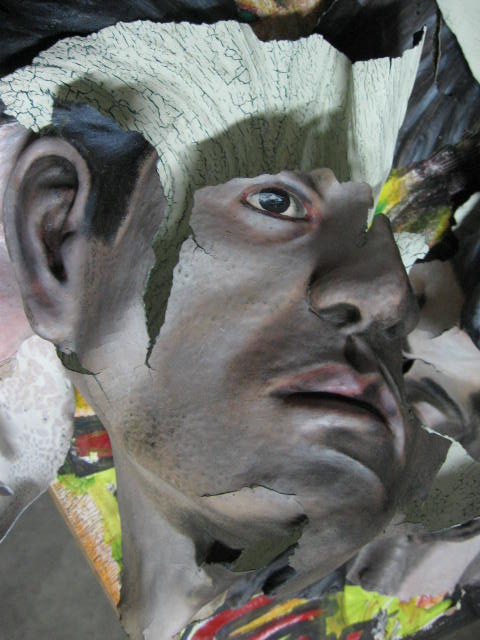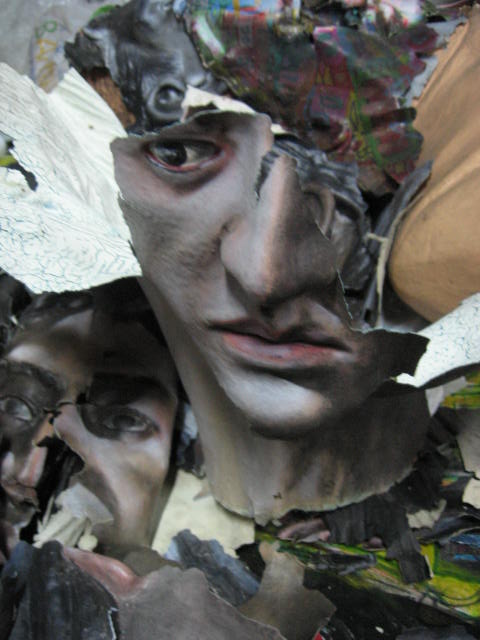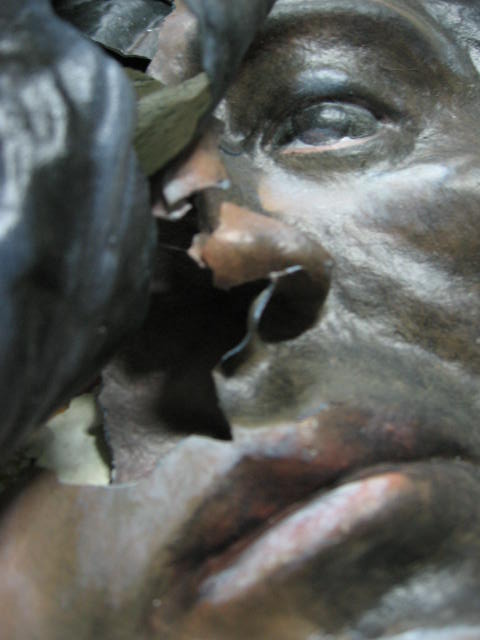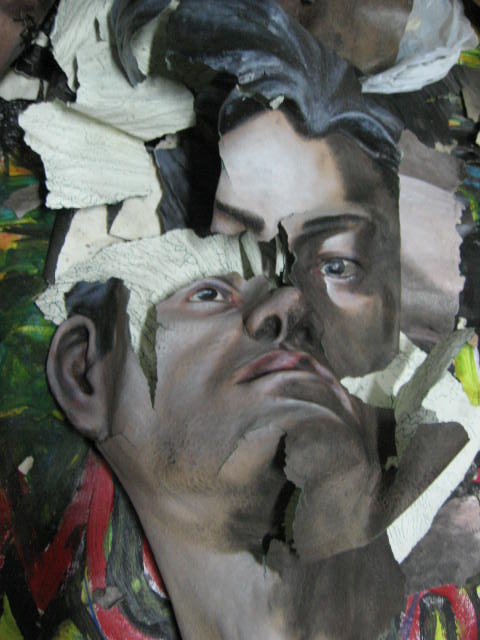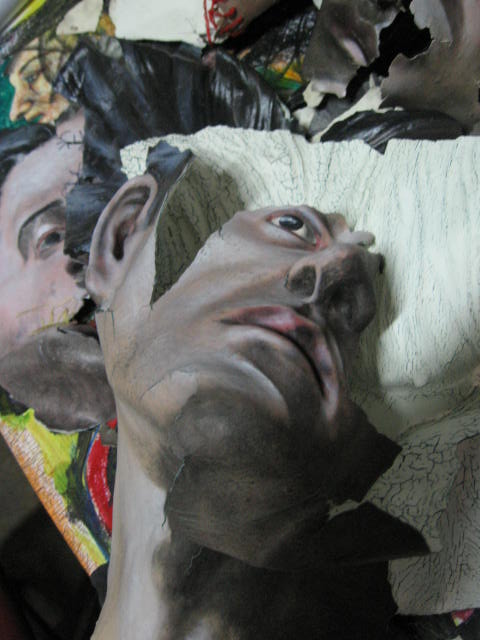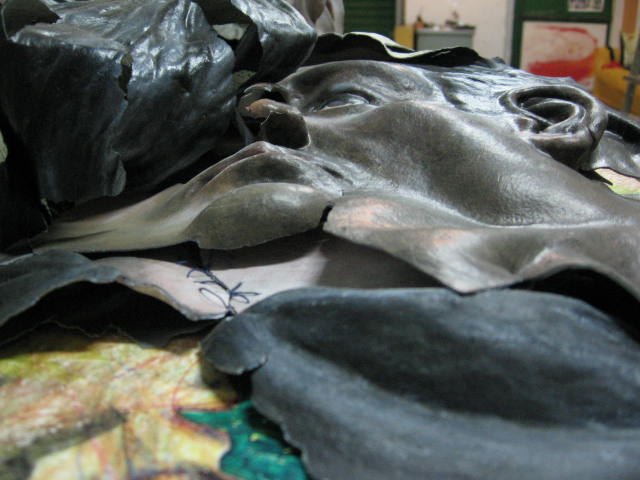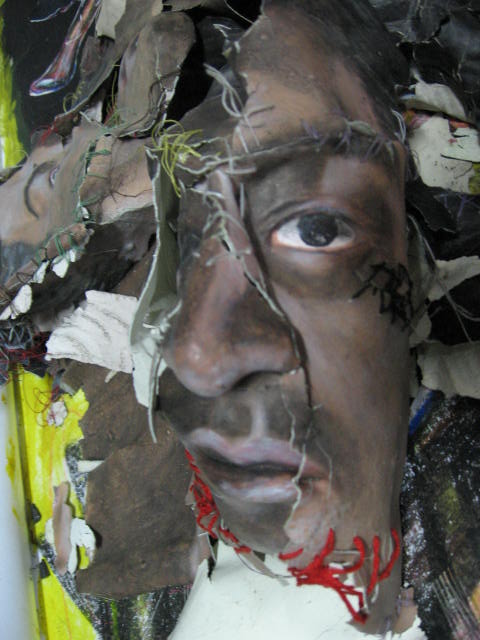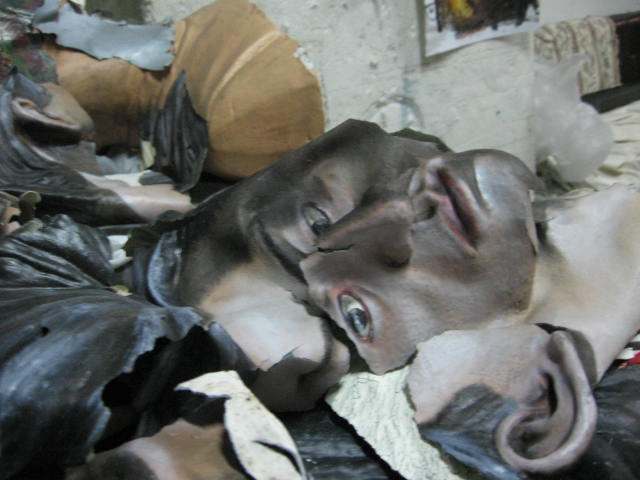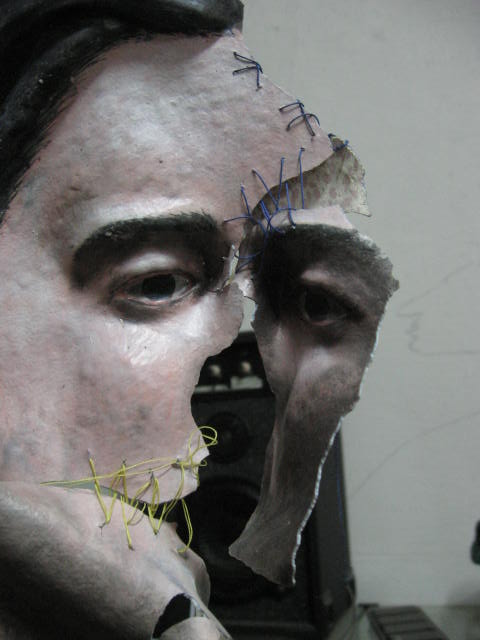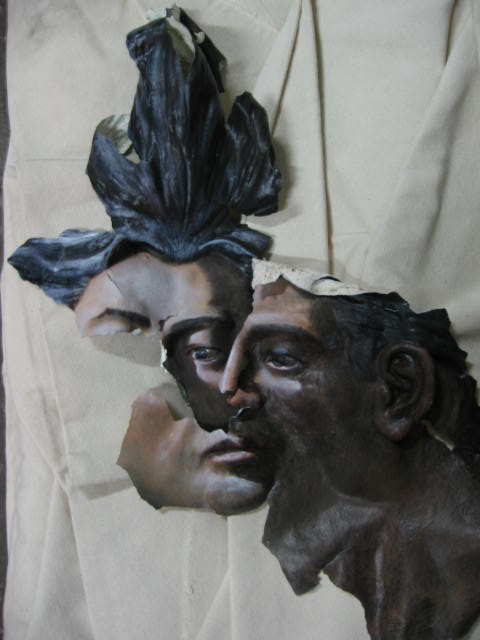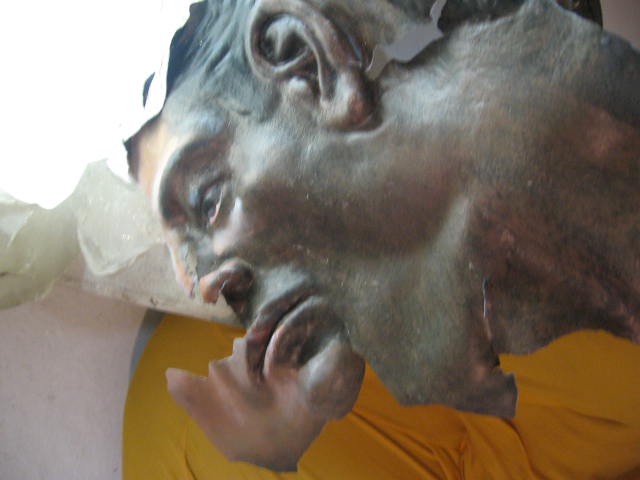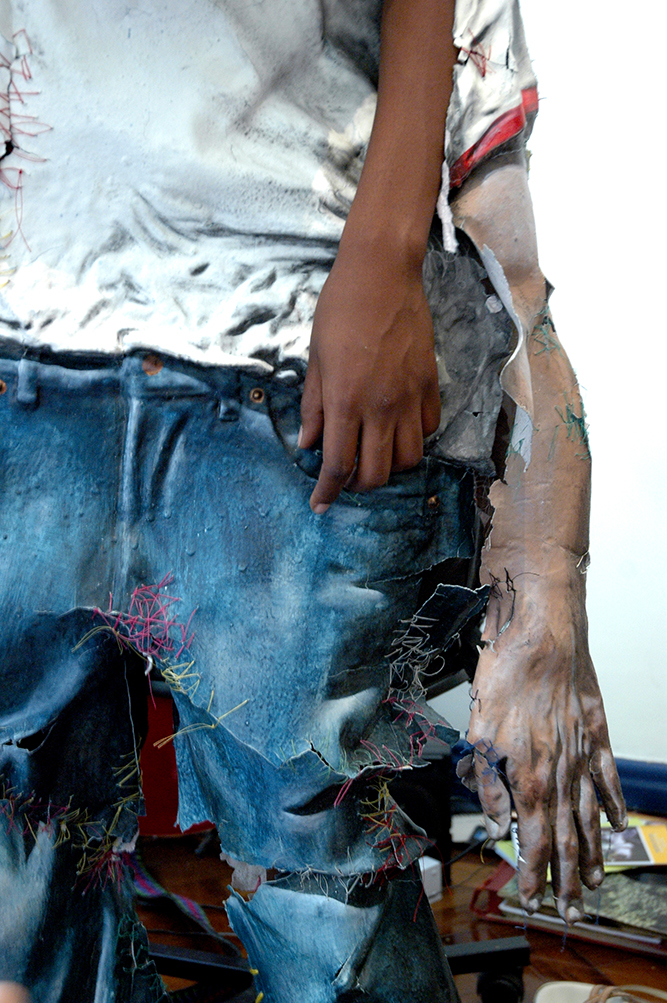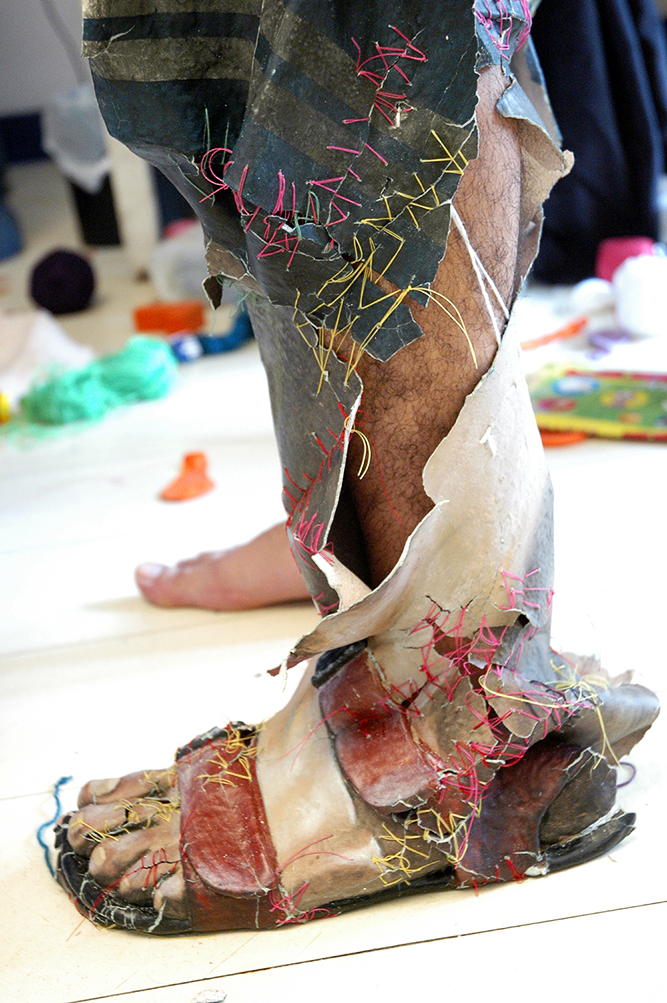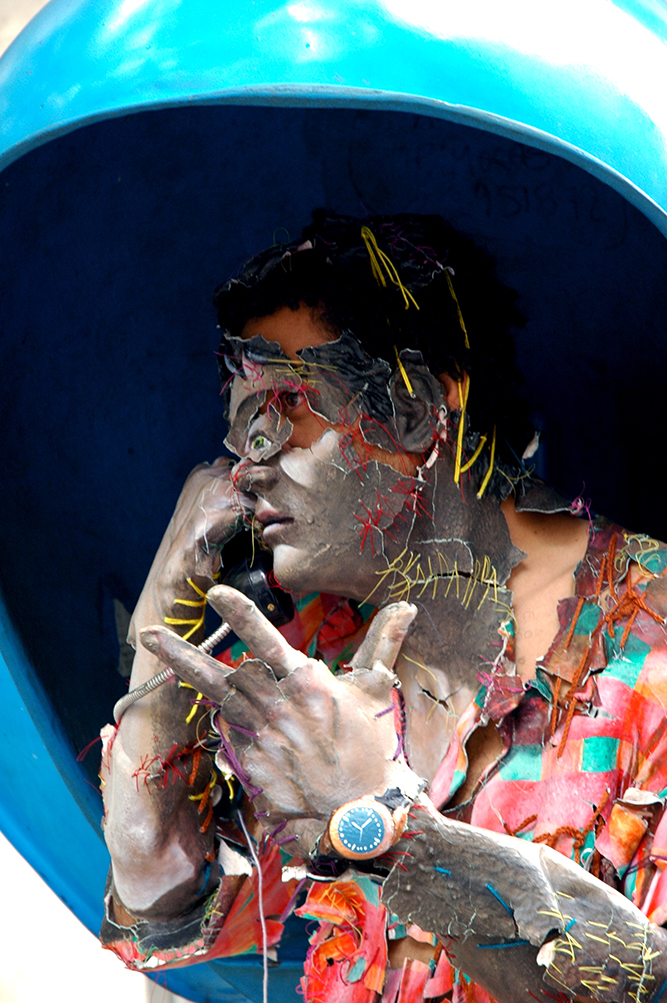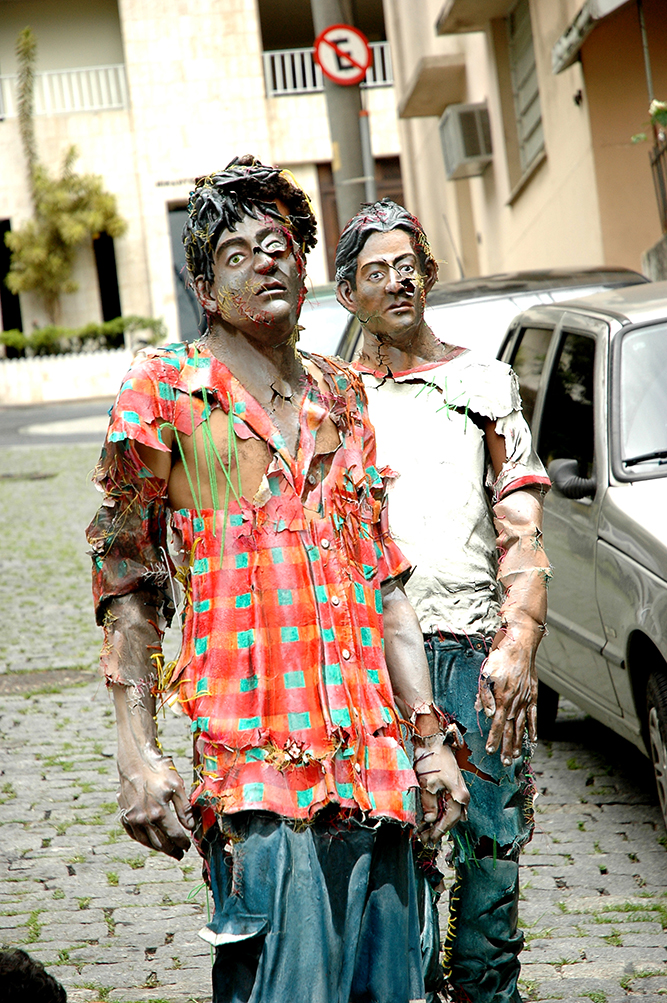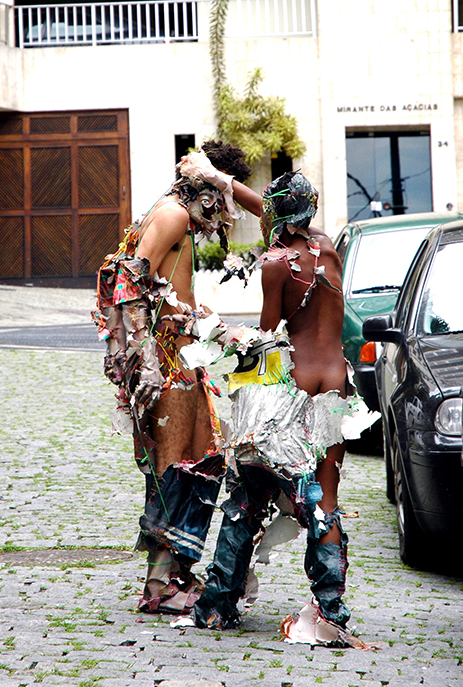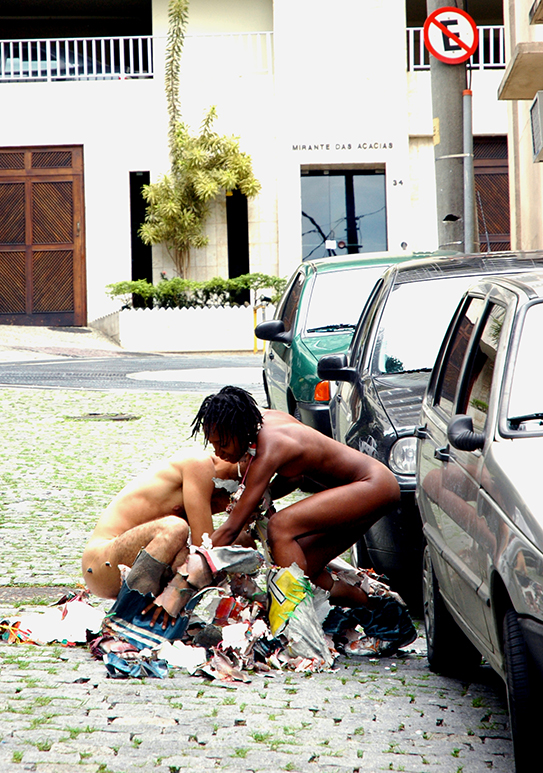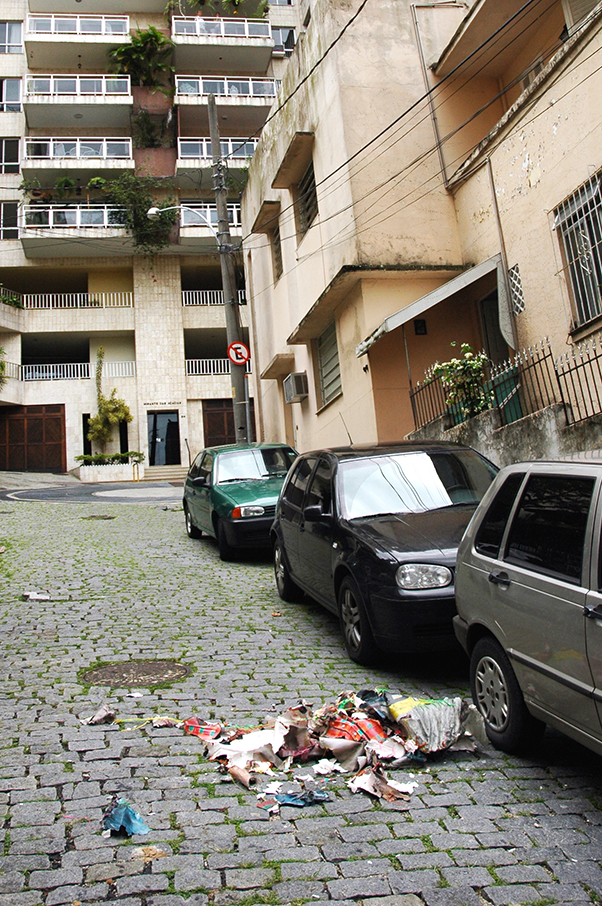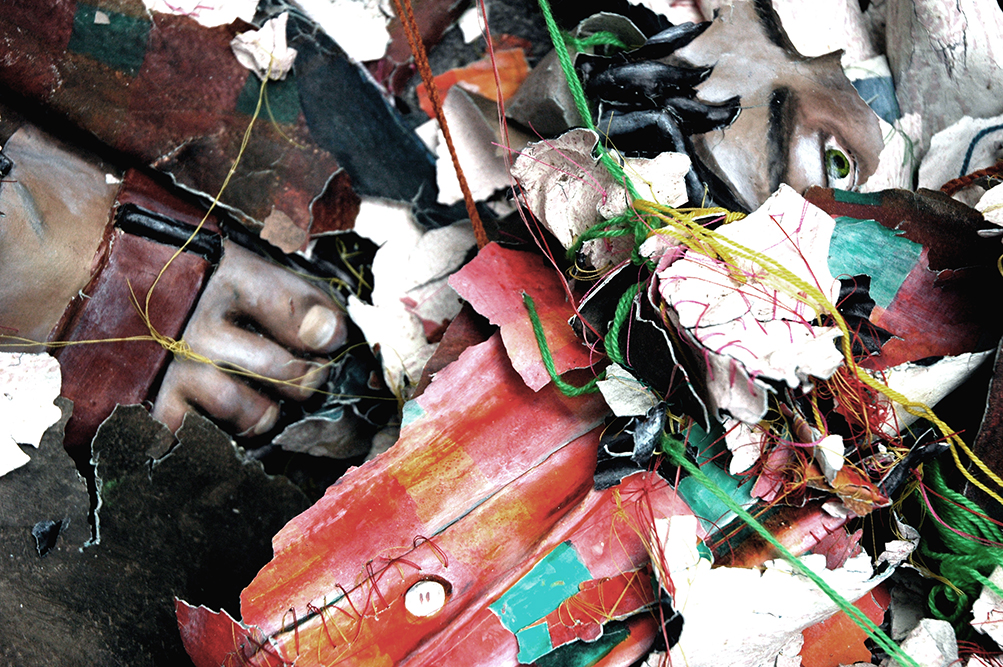PICTORIC VOODOOS
In the most prosaic sense of figurative painting, with the “Pictoric Voodoos” I seek a direct dialogue with the most trivial knowledges within the tradition of the fine arts, however, the thing becomes complicated when the themes of the paintings have real scale, move and jump from the surface flat to 3D. In this work, several layers of paint are applied on sculptures of people in real size, and in the last layer, the character receives colors and shadows inside the traditional light/dark “modellato”. With the paint already dry, it’s time to take off the painting/skin of paint from the sculpture, and finally, a black woman can dress herself in the skin of paint and pass through the streets as a white man, an old man can wear the skin of a young woman of “tailleur”, a lady can wear the skin of a man in a suit and a tie and so on. Unlike other urban intervention performances that seek to capture attention with maneuvers of displacement and contrast, where not infrequently, they leave the viewer with the doubt of seeing art or mere folly, I have already verified, walking anonymously a few meters behind a “Voodoo” in transit, the confused and intrigued expression of some passers-by regarding “it”, provoking the gaze surrounded by an almost morbid silence. Like any other citizen, these animated paintings can walk around the city, take a bus, cross a square, go to a musical concert or to an arts exhibition. This first attempt includes half a dozen human phenotypes, the most common seen in any urban center, namely: the man in a suit and a tie, the man in jeans and T-shirt, the man in shorts and sandals, the woman in ” tailleur “, the girl in skirt, the lady with glasses, among others. In a second attempt, skins of home appliances, vehicles, public sculptures and alike will follow.
VODOS PICTÓRICOS
Na clave do mais prosaico da pintura figurativa, procuro com os “Vodus Pictóricos” um dialogo direto com os saberes mais triviais dentro da tradição das belas artes, no entanto, à coisa se complica quando os temas das pinturas têm escala real, se movem e saltam da superfície plana para o 3D. Neste trabalho várias camadas de tinta são aplicadas sobre esculturas de pessoas em escala real, sendo que na última camada o personagem recebe cores e luz dentro do “modellato” tradicional do “claro/escuro”. Com a tinta já seca, é hora de tirar à pintura/pele de tinta do boneco, e por fim, uma mulher negra pode vestir-se de pintura trajando a pele de tinta e transitar pelas ruas dentro de um homem branco, um homem idoso pode transitar dentro da pintura de uma jovem de “tailleur”, uma senhora pode transitar dentro da pintura de um homem de terno e gravata e por ai a fora. Diferente de outras performances de intervenção urbana que buscam capturar a atenção com manobras de deslocamento e contraste, onde não raro, deixam no espectador a duvida de estarem vendo arte ou mero desatino, já verifiquei, andando anônimo a alguns metros atrás de um “Vodu” em transito, a expressão confusa e intrigada de alguns passantes com “aquilo” que provoca o olhar no esteio de um silencio quase mórbido. Como qualquer cidadão, essas pinturas animadas podem andar pela cidade, tomar um ônibus, atravessar uma praça, ir a um concerto musical ou a uma exposição de artes. Esta primeira investida conta com meia dúzia de tipos humanos, os mais comuns que se vê em qualquer centro urbano, a saber: o homem de terno e gravata, o homem de jeans e camiseta, o homem de bermuda e sandálias, a mulher de “tailleur”, a moça de saia, a senhora de óculos dentre outros. Em um segundo momento virão peles de eletrodomésticos, automóveis, esculturas publicas e afins.
